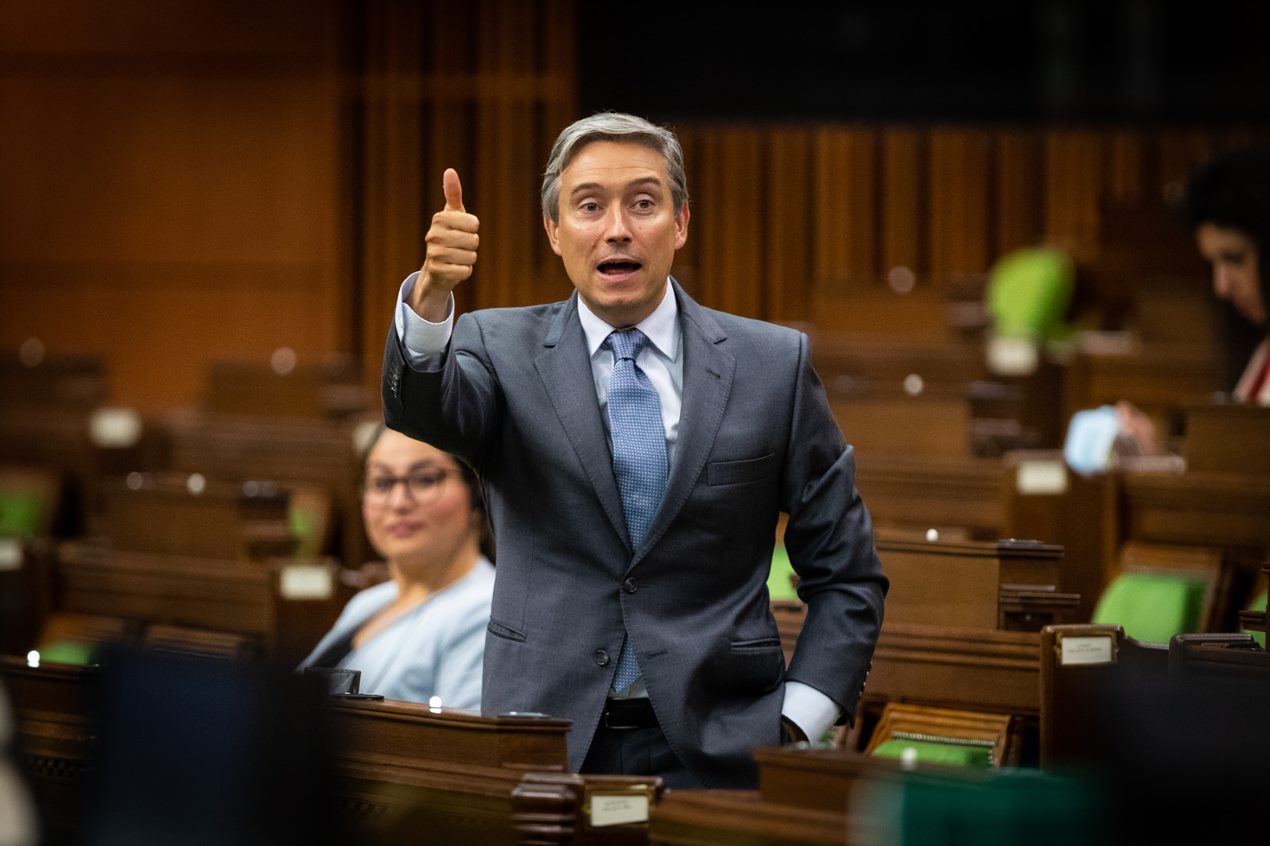Canada News
Minister suggests Canada is considering tariffs on Chinese EVs following U.S. move
U.S. government will be phasing in heavy tariffs on Chinese electric vehicles and other goods in coming years

François-Philippe Champagne wouldn’t rule out Canada imposing similar tariffs during an interview with CBC News Network’s Power & Politics on Friday. (File Photo: @FP_Champagne/Twitter)
Darren Major (new window) · CBC News
Canada’s industry minister says Ottawa is “considering all measures” after the U.S. announced it would be hiking tariffs on Chinese electric vehicles and other related goods.
François-Philippe Champagne wouldn’t rule out Canada imposing similar tariffs during an interview with CBC News Network’s Power & Politics on Friday.
It’s fair to say that everything is on the table to protect our industry and our workers,
Champagne told host David Cochrane.
We’re working in sync with the United States of America.
- U.S. raises tariffs significantly on EVs, other goods from China (new window)
- A 1st in Canada, $1.6B EV battery separator plant to open in Port Colborne, Ont., in 2027 (new window)
- Who benefits most from Canada’s ambitious EV targets? Maybe China (new window)
President Joe Biden announced earlier this week that the U.S. would be slapping new tariffs on Chinese electric vehicles (EVs), advanced batteries, solar cells, steel, aluminum and medical equipment.
The tariffs are to be phased in over the next three years; those that take effect in 2024 are covering EVs, solar cells, syringes, needles, steel and aluminum and more.
There are currently very few EVs from China in the U.S., but American officials worry that low-priced models made possible by Chinese government subsidies could soon start flooding the U.S. market.
In a separate interview on Tuesday, Flavio Volpe, president of the Automotive Parts Manufacturers’ Association, said Canada has to
implement similar trade levies.
Now that the Americans have put up a tariff wall, we can’t leave the side door open here,
Volpe told guest host John Paul Tasker.
WATCH | U.S. hikes tariffs on Chinese EVs as Ontario lands new EV battery plant:
Champagne insisted that Canada wouldn’t be a route for China to gain access to the North American EV market.
Canada has never been and will never be a backdoor [for] China in the North American market and our U.S. friends understand that,
he said.
The federal government has partnered with provinces to attract investments from major automotive manufacturers to spur electric vehicle production in Canada.
The same day the U.S. announced its new tariffs, Asahi Kasei Corp., in partnership with Honda, announced the construction of a $1.6-billion electric vehicle battery plant in Port Colborne, Ont.
WATCH | PM announces new EV supply chain plant in Port Colborne, Ont.:
Volpe said domestic EV production could be held back if China floods the Canadian market with cheaper products.
There’s no logic for Canada to force our market to electrify and then turn the market over to the Chinese,
he said.
China has maintained that the U.S. tariffs are a violation of international trade rules. It is not clear how the country will respond at this point.
Volpe suggested Beijing could retaliate by implementing export controls on its critical minerals that are used in EV battery manufacturing.
- Canada and U.S. make first co-investment in critical minerals producers (new window)
- Worried about foreign workers, Conservatives demand details of $15B Honda EV deal (new window)
Champagne said it’s important for Canada to shore up its own critical mineral production.
On Thursday, Canada and the U.S. announced they would be co-investing in critical mineral producers for the first time as they work to boost regional supplies.
Natural Resources Canada and the U.S. Department of Defense are together putting about $32.5 million into Fortune Minerals Ltd. — which is working on a project with bismuth and cobalt in the Northwest Territories — and Lomiko Metals Inc., focused on a graphite project in Quebec.
ABOUT THE AUTHOR
Darren Major (new window) · CBC Journalist
Darren Major is a senior writer for CBC’s Parliamentary Bureau. He can be reached via email at darren.major@cbc.ca.
With files from The Associated Press and The Canadian Press
This article is republished from RCI.





















